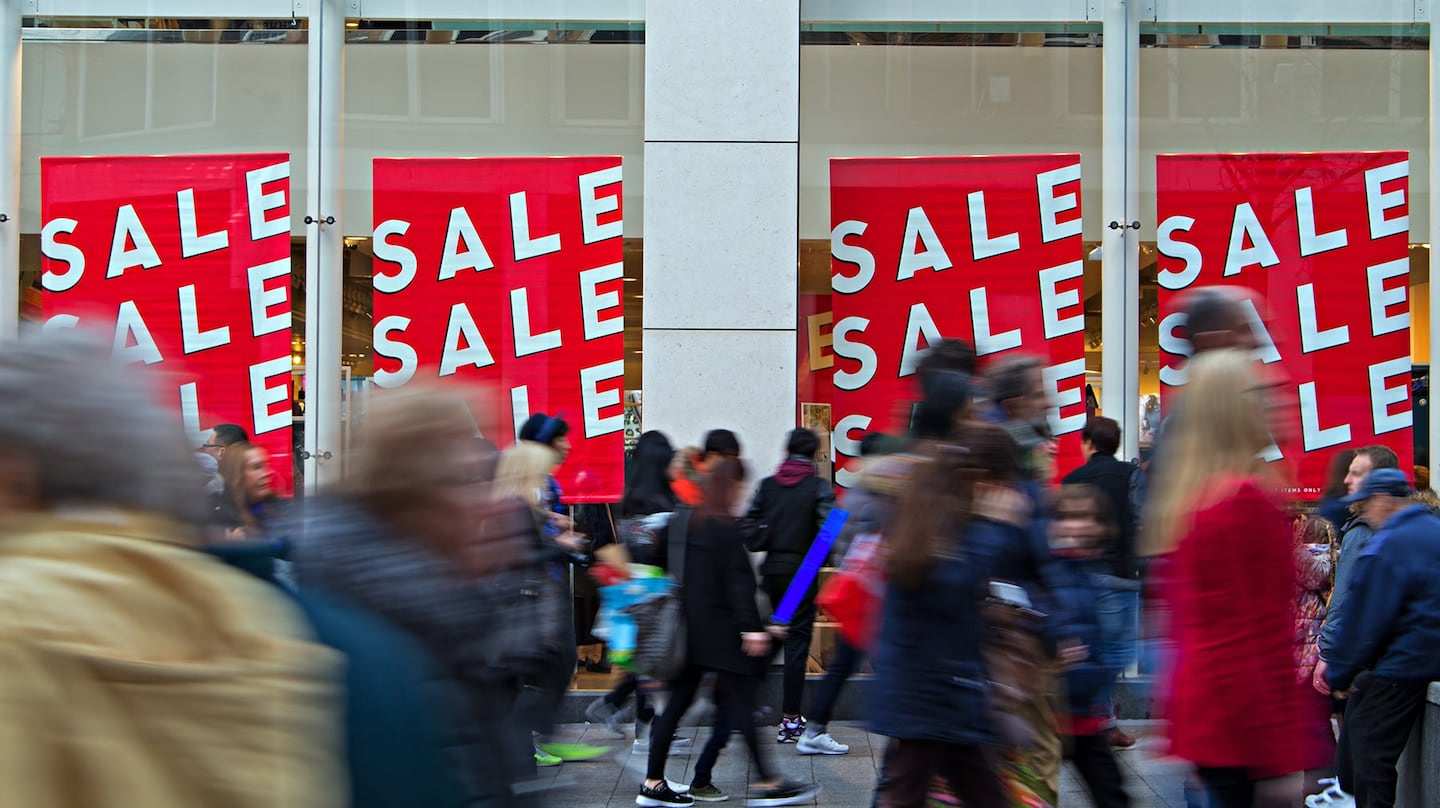
The Business of Fashion
Agenda-setting intelligence, analysis and advice for the global fashion community.

Agenda-setting intelligence, analysis and advice for the global fashion community.

NEW YORK, United States — Brick-and-mortar retailers did enough things right on Black Friday to consider the event a success, even if the crowds of past years haven't returned.
Chains simplified promotions this year and took a keener eye to managing their inventory. At Wal-Mart Stores Inc., colour-coded maps helped shoppers navigate the aisles. Retailers also made headway with their e-commerce sites, aiming to chip away at Amazon.com Inc.’s dominance online.
Taken together, the changes may help bolster sales and profit margins — despite a decline in customer traffic at many locations.
“People think retail is a nightmare, but it’s not,” said Tracy Ferschweiler, a Wal-Mart Stores Inc. market manager who oversees seven stores around New York and New Jersey.
ADVERTISEMENT
The weather also provided an assist, with cooler temperatures in much of the country putting shoppers in the mood for coats and sweaters. But the day wasn’t without its glitches. Macy’s Inc., the largest US department-store chain, struggled to process credit-card transactions. That led to long lines and frustrated customers.
Many retailers are counting on the holidays to help fuel their turnaround plans, and Black Friday is the season’s traditional starting point. Still, the event has lost significance over the years — especially as chains spread out their promotions to attract shoppers earlier in November.
In the past, Black Friday was famous for crowds bursting through doors and fighting over $99 DVD players. There’s less urgency among shoppers now, but retailers have many advantages this year, including strong consumer confidence and low unemployment.
The day has become more about the experience of shopping, rather than the actual discounts, said David Bassuk, co-head of retail consulting at AlixPartners LLP.
“People want to start getting into the holiday spirit and enjoy the concept of shopping and the holidays,” he said.
Family Tradition
At a Target Corp. store in Kingston, New York, 55-year-old Donna McCluskey said she got up early to shop Black Friday deals as part of a family tradition.
“We do this every year — we came here for fun,” said McCluskey, who arrived at Target with her two adult sons. “We do a lot of shopping online, but it’s a different experience shopping in stores. You can feel and touch and look at the products.”
ADVERTISEMENT
E-commerce continues to outpace brick-and-mortar retail in sales growth, making it crucial for traditional stores to have enticing websites and apps.
As of Friday morning, Black Friday online spending was up 18 percent this year, according to Adobe Systems Inc. Much of that shopping is now occurring on phones, with mobile devices accounting for 61 percent of visits.
Physical-store traffic, meanwhile, was down 4 percent to 6 percent, Cowen & Co. analyst Oliver Chen estimates.
Retailers have tried to avoid becoming showrooms for Amazon, meaning customers look at products in their stores and then buy it from the e-commerce giant. To keep shoppers from straying, Wal-Mart and others have pumped billions into their web operations.
Sights and Sounds
Macy’s overhauled its rewards program, aiming to keep consumers loyal regardless of whether they’re online or off. A customer who shells out at least $500 a year gets free shipping and 25 percent off a day of shopping.
But the 159-year-old chain also is touting its traditional retail experience as a way to hook shoppers.
“Customers today want to go to a store — the sights, the smells, the sounds,” chief executive Jeff Gennette said in an interview Friday.
ADVERTISEMENT
Some retailers have more of an uphill battle. Sears Holdings Corp. saw same-store sales fall 17 percent at its flagship chain last quarter and 13 percent and its Kmart brand.
At a Sears in upstate New York, a quiet store greeted 47-year-old Nadine Charles on Friday. She’s been a regular Sears customer for years, but feels like the selection has gone downhill.
“I don’t find anything good anymore at Sears,” said Charles, a nurse with four kids. “They don’t have good brands. Now I can buy things in Wal-Mart — they are cheaper and last longer.”
By Matthew Boyle, Lindsey Rupp and Stephanie Wong with assistance from Emma Chandra; Editors: Nick Turner and Jonathan Roeder.
From analysis of the global fashion and beauty industries to career and personal advice, BoF’s founder and CEO, Imran Amed, will be answering your questions on Sunday, February 18, 2024 during London Fashion Week.
The State of Fashion 2024 breaks down the 10 themes that will define the industry in the year ahead.
Imran Amed reviews the most important fashion stories of the year and shares his predictions on what this means for the industry in 2024.
After three days of inspiring talks, guests closed out BoF’s gathering for big thinkers with a black tie gala followed by an intimate performance from Rita Ora — guest starring Billy Porter.